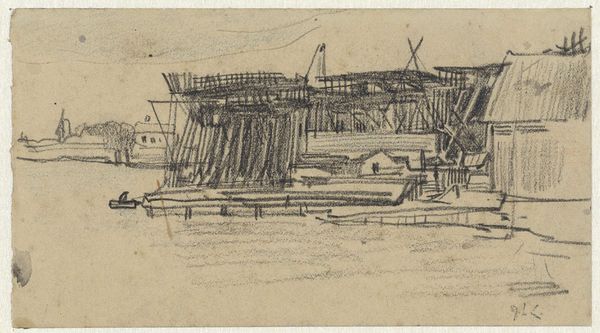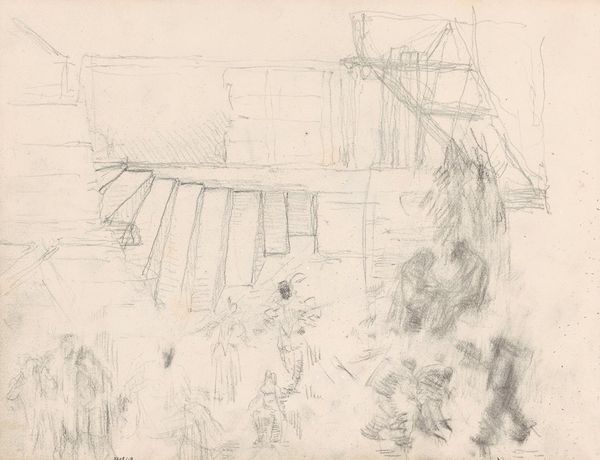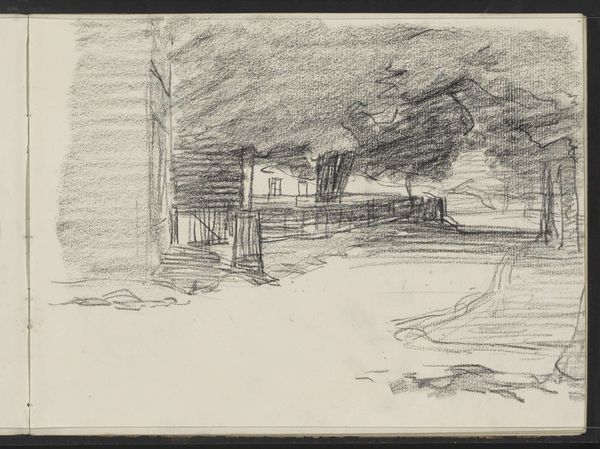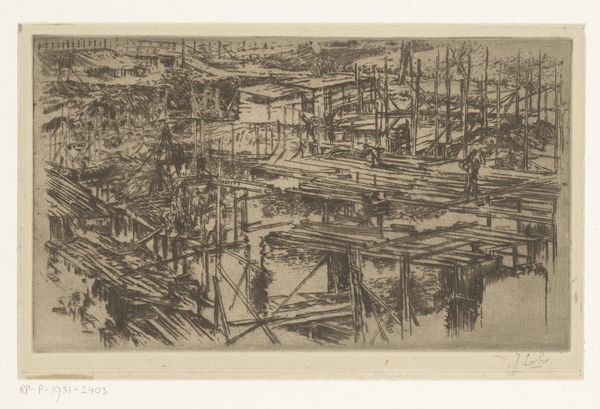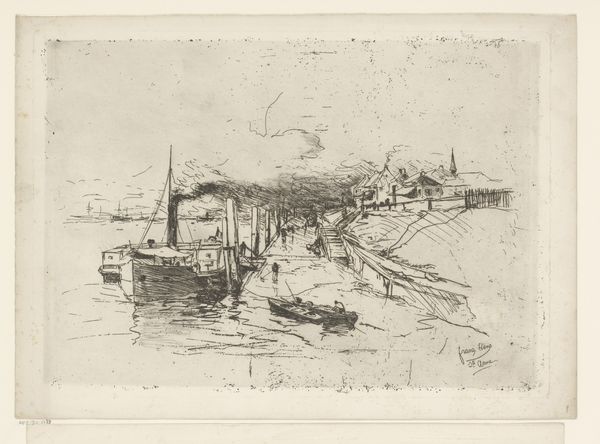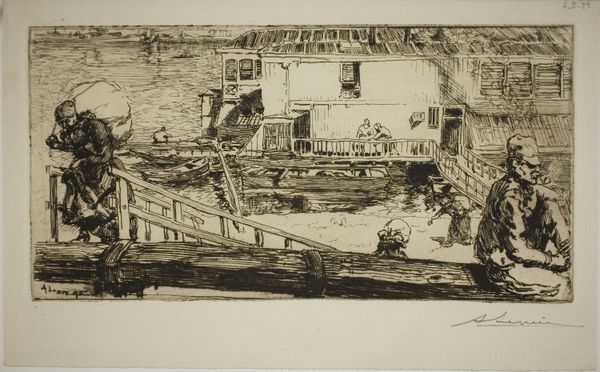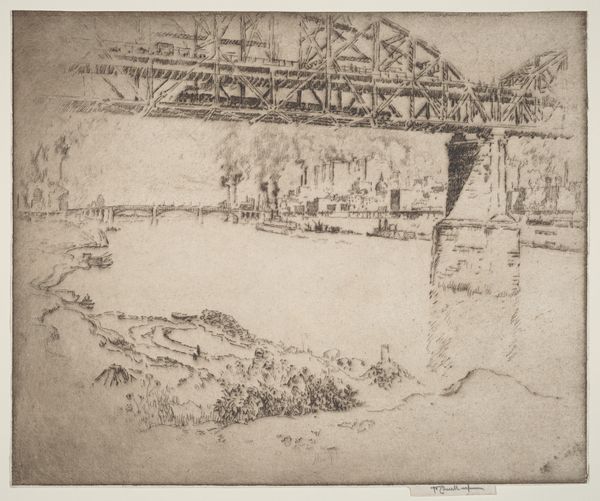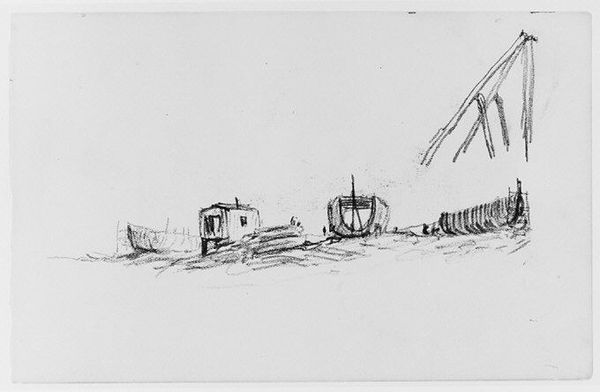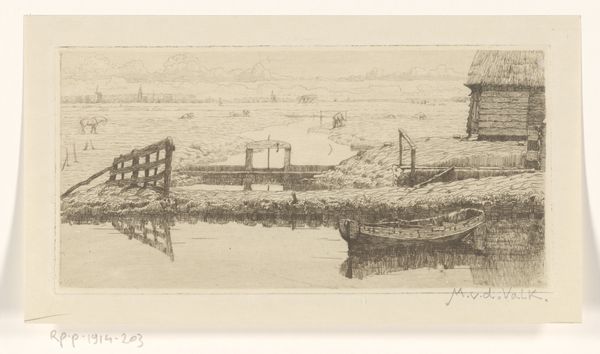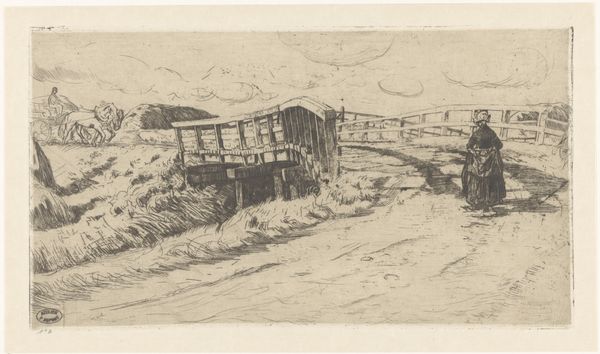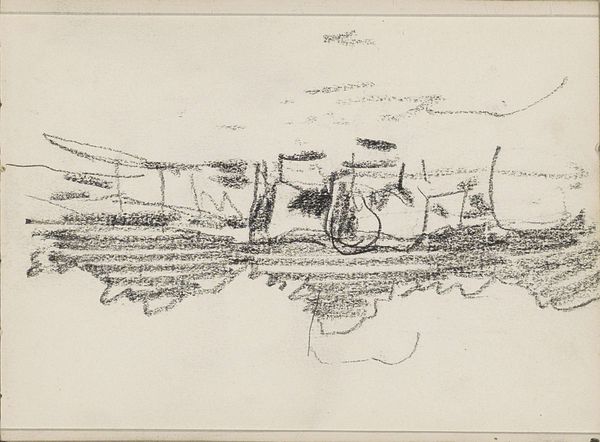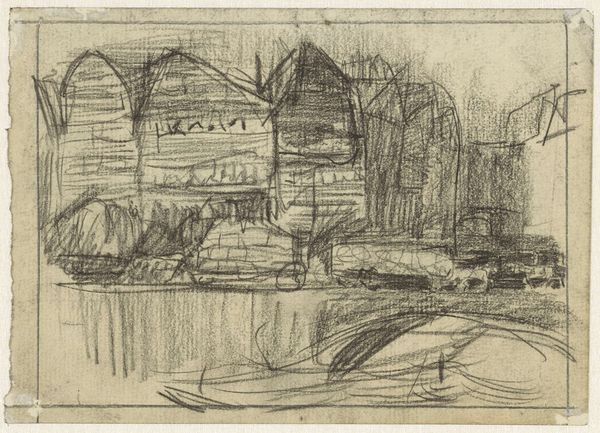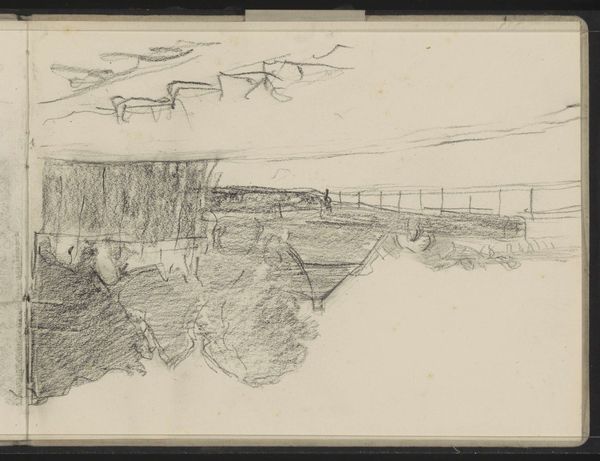
drawing, pencil
#
drawing
#
pen sketch
#
pencil sketch
#
asian-art
#
landscape
#
etching
#
romanticism
#
pencil
Dimensions: height 174 mm, width 329 mm
Copyright: Rijks Museum: Open Domain
Editor: Here we have Adrianus Johannes Bik's "River and Bridge (Landing Place?), Java," dating from somewhere between 1816 and 1846. It's a pencil drawing, and looking at it, I’m immediately struck by its seemingly casual nature. It’s like a quick sketch capturing a moment. What stands out to you? Curator: Well, what captivates me are the material realities embedded in the drawing itself and its historical context. Look at the deliberate marks – the pencil on paper. It's not just a pretty landscape, but a record of labor, of the artist's hand mediating the colonial landscape of Java. Editor: Colonial landscape? How so? Curator: Consider the subject – a river, a bridge, a landing place. These aren't simply picturesque elements; they're infrastructure. Who built this? What materials were used? And for what purpose? The Dutch East India Company controlled Java during this period. Editor: So, the drawing documents their influence? Curator: Precisely. Bik's drawing becomes evidence of resource extraction, trade routes, and the imposition of European systems upon a pre-existing environment. Even the choice of a relatively inexpensive medium like pencil speaks to the context: sketching was useful for cataloguing and resource management. We can consider it part of the colonial machine. Editor: That gives me a totally new perspective! I hadn't considered the economic implications embedded within. It really transforms my view of the artwork. Curator: Exactly. Art is not separate from labor or the means of production and consumption; rather it is a cultural record, and by recognizing these structures, we understand that historical and economic dynamics determine an artwork’s interpretation. Editor: Thanks, that materialist lens definitely shed some light.
Comments
No comments
Be the first to comment and join the conversation on the ultimate creative platform.
